The event of autonomous automobiles represents a dramatic change in transportation programs. These autonomous automobiles are based mostly on a cutting-edge set of applied sciences that allow them to drive safely and successfully with out the necessity for human intervention.
Laptop imaginative and prescient is a key part of self-driving automobiles. It empowers the automobiles to understand and comprehend their environment, together with roads, visitors, pedestrians, and different objects. To acquire this information, a car makes use of cameras and sensors. It then makes fast selections and drives safely in numerous highway situations based mostly on what it observes.
On this article, we’ll elaborate on how pc imaginative and prescient enhances these automobiles. We’ll describe the thing detection fashions, information processing with a LiDAR gadget, analyzing scenes, and planning the route.
Improvement Timeline of Autonomous Autos
A rising variety of cars with know-how that enable to function the automobiles beneath human supervision have been manufactured and launched onto the market. Superior driver help programs (ADAS) and automatic driving programs (ADS) are each new types of driving automation.
Right here we current the event timeline of the autonomous automobiles.
- 1971 – Daniel Wisner designed an digital cruise management system
- 1990 – William Chundrlik developed the adaptive cruise management (ACC) system
- 2008 – Volvo invented the Computerized Emergency Braking (AEB) system.
- 2013 – Introducing pc imaginative and prescient strategies for car detection, monitoring, and conduct understanding
- 2014 – Tesla launched its first business autonomous car Tesla mannequin S
- 2015 – Algorithms for vision-based car detection and monitoring (collision avoidance)
- 2017 – 27 publicly obtainable information units for autonomous driving
- 2019 – 3D object detection (and pedestrian detection) strategies for autonomous automobiles
- 2020 – LiDAR applied sciences and notion algorithms for autonomous driving
- 2021 – Deep studying strategies for pedestrian, bike, and car detection
Key CV strategies in Autonomous Autos
To navigate safely, autonomous automobiles make use of a mixture of sensors, cameras, and clever algorithms. To perform this, they require two key parts: machine studying and pc imaginative and prescient.
The eyes of the auto are pc imaginative and prescient fashions. They file pictures and movies of every little thing surrounding the car utilizing cameras and sensors. Highway traces, visitors indicators, folks, and different automobiles are all examples of this. The car then interprets these pictures and movies utilizing specialised strategies.
Machine studying strategies signify the mind of the automobile. They analyze the data from the sensors and cameras. After that, they make the most of specialised algorithms to determine tendencies, predict outcomes, and take up contemporary information. Right here we’ll current the principle CV methods that enable autonomous driving.
Object Detection
Coaching self-driving automobiles to acknowledge objects on the highway and round them is a significant part of constructing them perform. To distinguish between objects like different automobiles, pedestrians, highway indicators, and obstacles, the automobiles use cameras and sensors. The car acknowledges this stuff in real-time with pace and accuracy utilizing refined pc imaginative and prescient methods.
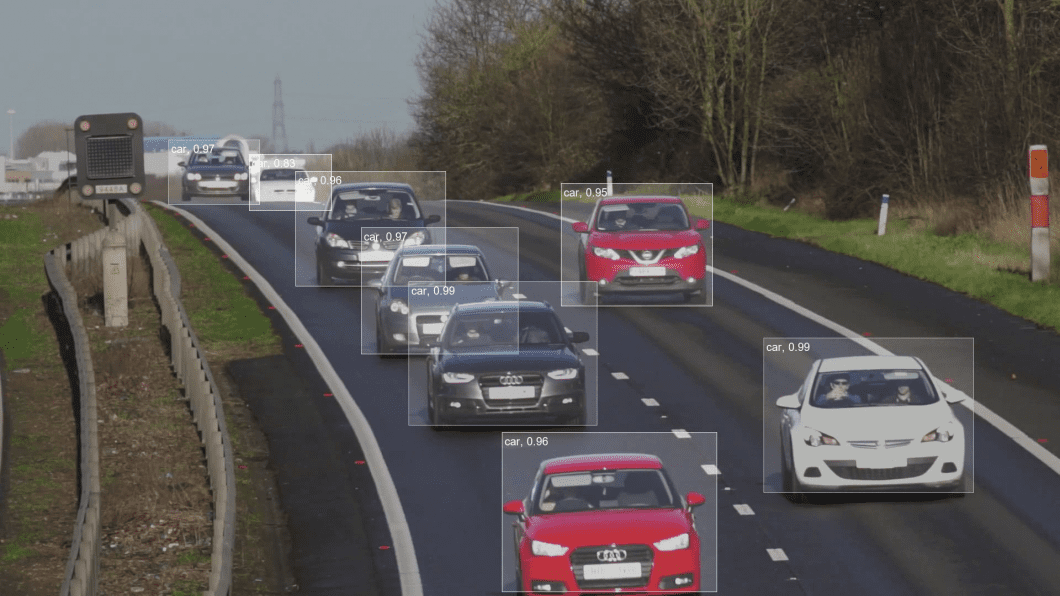
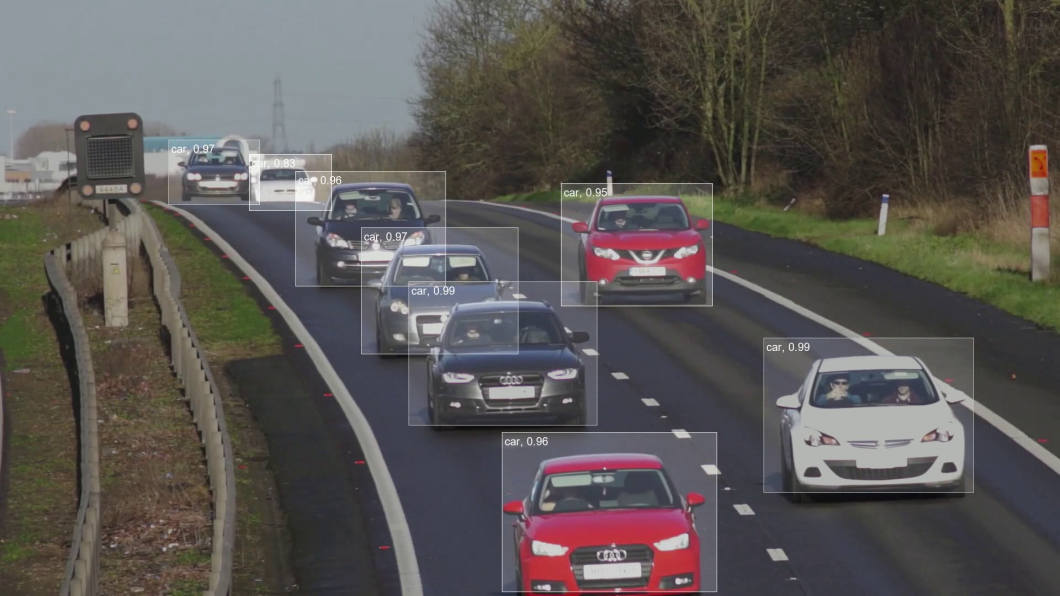
Autos can acknowledge the looks of the bicycle owner, pedestrian, or automobile in entrance of them due to class-specific object detection. The management system triggers visible and auditory alerts to advise the motive force to take preventative motion when it estimates the probability of a frontal collision with the recognized pedestrian, bicycle, or car.
Li et al. (2016) launched a unified framework to detect each cyclists and pedestrians from pictures. Their framework generates a number of object candidates by utilizing a detection suggestion methodology. They utilized a Quicker R-CNN-based mannequin to categorise these object candidates. The detection efficiency is then additional enhanced by a post-processing step.
Garcia et al. (2017) developed a sensor fusion method for detecting automobiles in city environments. The proposed method integrates information from a 2D LiDAR and a monocular digital camera utilizing each the unscented Kalman filter (UKF) and joint probabilistic information affiliation. On single-lane roadways, it produces encouraging car detection outcomes.
Chen et al. (2020) developed a light-weight car detector with a 1/10 mannequin dimension that’s 3 times quicker than YOLOv3. EfficientLiteDet is a light-weight real-time method for pedestrian and car detection by Murthy et al. in 2022. To perform multi-scale object detection, EfficientLiteDet makes use of Tiny-YOLOv4 by including a prediction head.
Object Monitoring
When the car detects one thing, it should control it, significantly whether it is shifting. Understanding the place objects, equivalent to different automobiles and folks, may transfer subsequent is important for path planning and stopping collisions. The car predicts this stuff’ subsequent location by monitoring their actions over time. It’s achieved by pc imaginative and prescient algorithms.
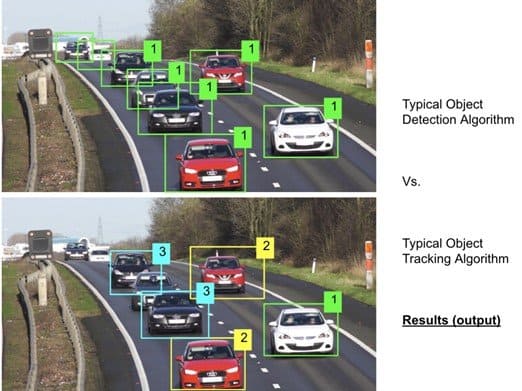

Deep SORT (Easy On-line and Realtime Monitoring with a Deep Affiliation Metric), incorporates deep studying capabilities to extend monitoring precision. It incorporates look information to protect an object’s identification all through time, even when it’s obscured or briefly leaves the body.
Monitoring the motion of things surrounding self-driving cars is essential. To plan the motion of a steering wheel and stop collisions, Deep SORT assists the car in predicting the actions of those objects.
Deep SORT allows the self-driving automobiles to hint the paths of objects which are noticed by YOLO. That is significantly helpful in visitors jams when automobiles, bikes, and folks transfer in several methods.
Semantic Segmentation
For autonomous automobiles to understand and interpret their environment, semantic segmentation is important. Semantic segmentation provides an intensive grasp of the objects in an image, equivalent to roads, automobiles, indicators, visitors indicators, and pedestrians, by classifying every pixel.
For autonomous driving programs to make sensible selections concerning their motions and interactions with their surroundings, this data is essential.
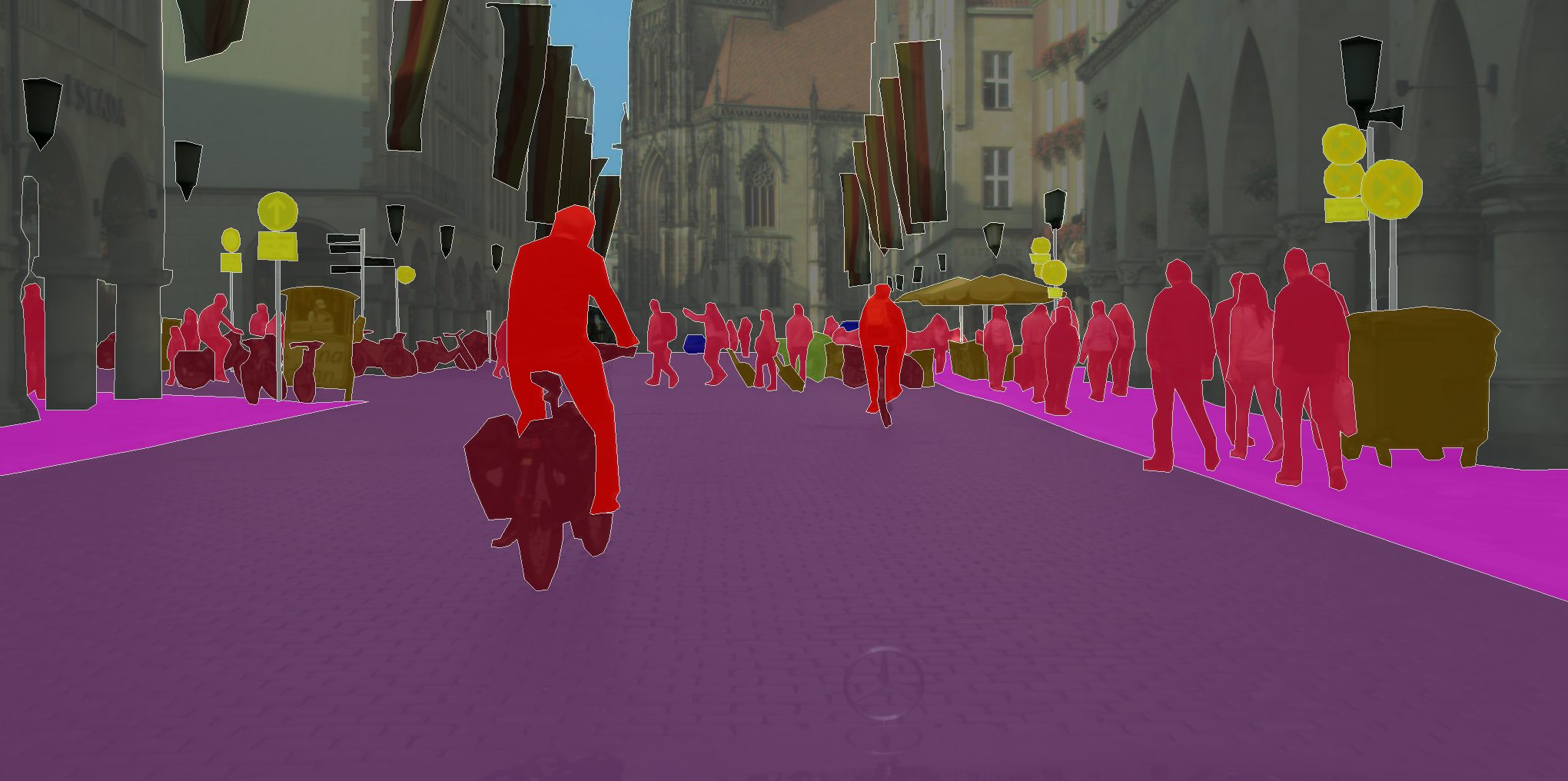

Semantic segmentation is now extra correct and environment friendly due to deep studying methods that make the most of neural community fashions. Semantic segmentation efficiency has improved on account of extra exact and efficient pixel-level categorization made potential by convolutional neural networks (CNNs) and autoencoders.
Moreover, autoencoders purchase the flexibility to rebuild enter pictures whereas preserving vital particulars for semantic segmentation. Utilizing deep studying methods, autonomous automobiles can carry out semantic segmentation at exceptional speeds with out sacrificing accuracy.
Semantic segmentation real-time information evaluation requires scene comprehension and visible sign processing. To categorize pixels into distinct teams, visible sign processing methods extract invaluable data from the enter information, equivalent to picture attributes and traits. Scene understanding denotes the flexibility of the car to know its environment utilizing segmented pictures.
Sensors and Datasets
Cameras
Essentially the most extensively used picture sensors for detecting the seen gentle spectrum mirrored from objects are cameras. Cameras are comparatively cheaper than LiDAR and Radar. Digicam pictures supply easy two-dimensional data that’s helpful for lane or object detection.
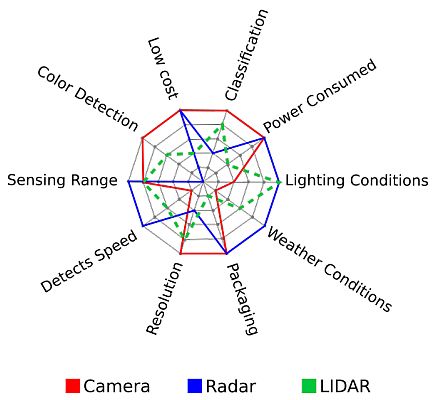

Cameras have a measurement vary of a number of millimeters to at least one hundred meters. Nonetheless, gentle and climate circumstances like fog, haze, mist, and smog have a significant influence on digital camera efficiency, limiting its use to clear skies and sunlight hours. Moreover, since a single high-resolution digital camera usually produces 20–60 MB of information per second, cameras additionally battle with huge information volumes.
LiDAR
LiDAR is an lively ranging sensor that measures the round-trip time of laser gentle pulses to find out an object’s distance. It might measure as much as 200 meters due to its low divergence laser beams, which scale back energy degradation over distance.
LiDAR can create exact and high-resolution maps due to its high-accuracy distance measuring functionality. Nonetheless, LiDAR shouldn’t be acceptable for recognizing small targets resulting from its sparse observations.


Moreover, climate situations can have an effect on its measurement accuracy and vary. Lastly, LiDAR’s intensive software in autonomous automobiles is restricted by its costly price. Moreover, LiDAR generates between 10 and 70 MB of information per second, which makes it troublesome for onboard pc platforms to course of this information in real-time.
Radar and Ultrasonic sensors
Radar detects objects by utilizing radio or electromagnetic radiation. It might decide the gap to an object, the thing’s angle, and relative pace. Radar programs sometimes run at 24 GHz or 77 GHz frequencies.
A 24 GHz radar can measure as much as 70 meters, and a 77 GHz radar can measure as much as 200 meters. Radar is best fitted to measurements in environments with mud, smoke, rain, poor lighting, or uneven surfaces than LiDAR. The information dimension generated by every radar ranges from 10 to 100 KB.
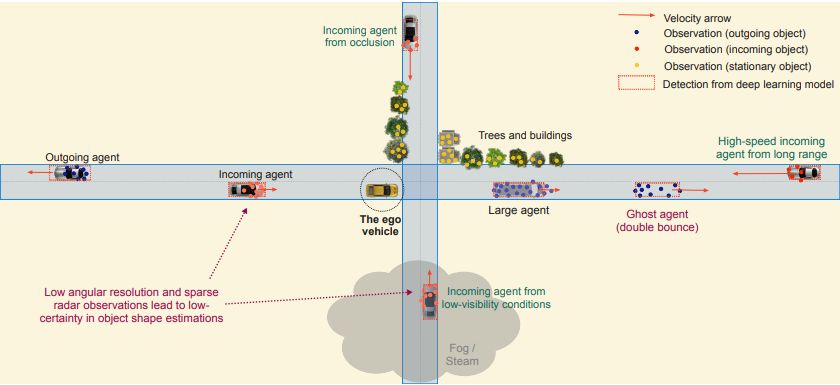

Ultrasonic sensors use ultrasonic waves to measure an object’s distance. They obtain the ultrasonic wave mirrored from the goal after the sensor head emits it. The time between emission and reception is measured to calculate the gap.
The benefits of ultrasonic sensors embrace their ease of use, glorious accuracy, and capability to detect even minute modifications in location. They’re also used in automobile anti-collision and self-parking programs. Furthermore, their measuring distance is restricted to fewer than 20 meters.
Information units
The flexibility of full self driving automobiles to sense their environment is important to their protected operation. Usually talking, autonomous automobiles use a wide range of sensors along with superior pc imaginative and prescient algorithms to collect the info they want from their environment.
Benchmark information units are needed since these algorithms sometimes depend on deep studying strategies, significantly convolutional neural networks (CNNs). Researchers from academia and trade have gathered a wide range of information units for assessing numerous points of autonomous driving programs.
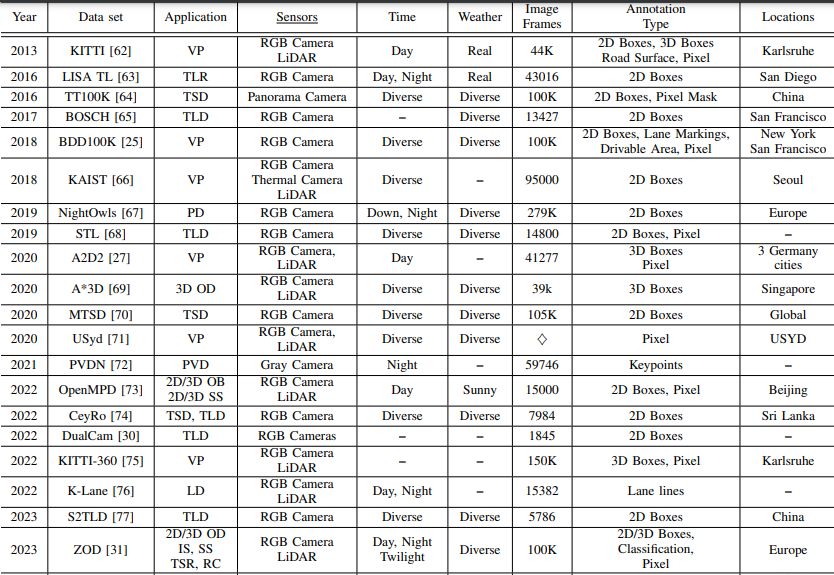

The information units utilized for notion duties in autonomous automobiles that had been gathered between 2013 and 2023 are compiled within the desk under. The desk shows the forms of sensors, the existence of unfavorable circumstances (equivalent to time or climate), the amount of the info set, and the placement of information assortment.
Moreover, it presents the forms of annotation codecs and potential purposes. Subsequently, the desk supplies tips for engineers to pick out one of the best information set for his or her specific software.
What’s Subsequent for Autonomous Autos?
Autonomous automobiles will grow to be considerably extra clever as synthetic intelligence (AI) advances. Though the event of autonomous know-how has introduced many thrilling breakthroughs, there are nonetheless vital obstacles that should be rigorously thought of:
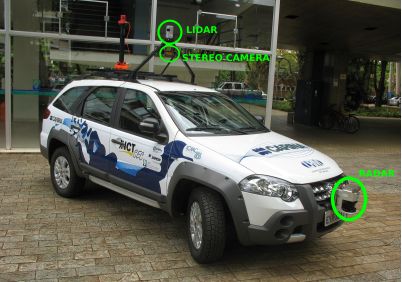

- Security options: Making certain the security of those automobiles is a big activity. As well as, growing protected mechanisms for cars is important, e.g. visitors gentle obeying, blind spot detection, lane departure warning, and many others. Additionally, to satisfy the necessities of the freeway visitors security administration.
- Reliability: These automobiles should all the time perform correctly, no matter their location or the climate situations. This sort of dependability is important for gaining human drivers’ acceptance.
- Public belief: To get belief – autonomous automobiles require extra than simply demonstrating their reliability and security. Educating the general public concerning the benefits and limitations of those automobiles and being clear about their operation, together with safety and privateness.
- Sensible metropolis integration: It should end in safer roads, much less visitors congestion, and extra environment friendly visitors circulate. All of it comes all the way down to linking cars to the infrastructure of good cities.
Ceaselessly Requested Questions
Q1: What programs for assisted driving had been predecessors of autonomous automobiles?
Reply: Superior driver help programs (ADAS) and automatic driving programs (ADS) are types of driving automation which are predecessors to autonomous automobiles.
Q2: Which pc imaginative and prescient strategies are essential for autonomous driving?
Reply: Strategies like object detection, object monitoring, and semantic segmentation are essential for autonomous driving programs.
Q3: What gadgets allow the sensing of the surroundings in autonomous automobiles?
Reply: Cameras, LiDAR, radars, and ultrasonic sensors – all these allow distant sensing of the encircling visitors and objects.
This fall: Which elements have an effect on the broader acceptance of autonomous automobiles?
Reply: The elements that have an effect on broader acceptance of autonomous automobiles embrace their security, reliability, public belief (together with privateness), and good metropolis integration.



